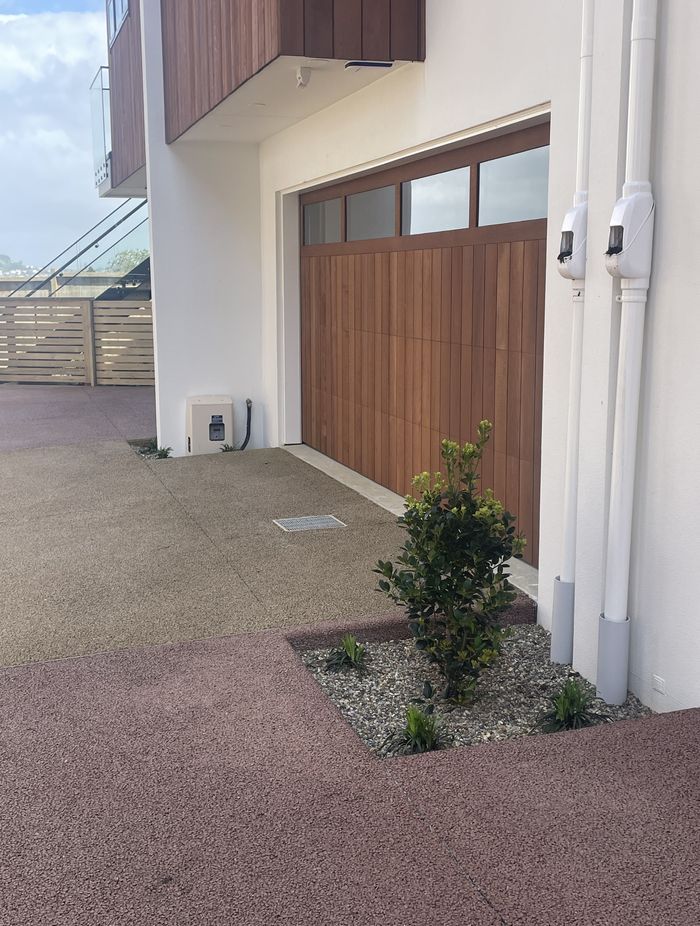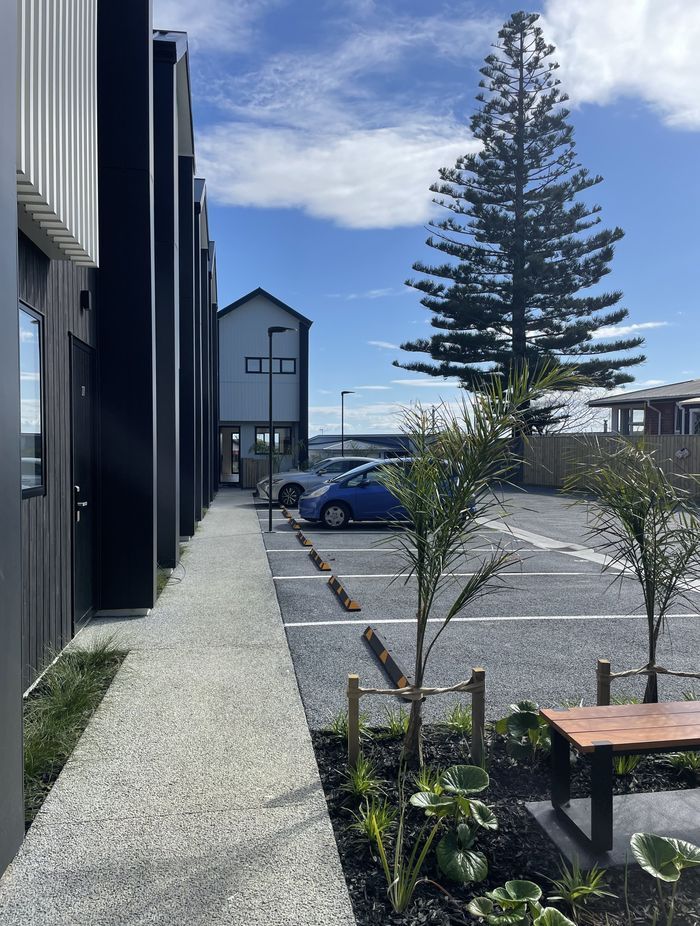Paving the way to a better future: the surprising benefits of permeable concrete
Written by
04 June 2024
•
5 min read

Once a topic rarely discussed outside the construction and urban planning sectors, the 2023 floods brought stormwater management, and associated conversations around permeable surfaces and effective drainage systems, to the forefront. Now, many of us understand the importance of rain gardens, permeable concrete, and stormwater retention tanks, and homeowners across the country are concerned with the effectiveness of their property’s drainage system. Though general knowledge on the topic has increased, there are still a surprising number of lesser-known benefits to using permeable concrete in both residential and commercial applications. ArchiPro sat down with Stuart Girvan, Operations Manager at Permcon New Zealand, to learn more about this extraordinary material.


What is permeable concrete?
Though every permeable concrete manufacturer will have their own special recipe, Girvan says permeable concrete is the same as standard concrete in most regards.
“While most concrete has a sand binder or filler to hold the stone aggregate together, permeable concrete doesn’t have any of that. Our permeable concrete is just the stone aggregate, the cement, water, and our additive, which is the secret recipe that makes it all work,” Girvan explains.
“By removing the sand fillers, we create a honeycomb-like firm matrix that has holes all the way through it. Because there isn’t any sand filler to bind the concrete together, we are reliant on the cement paste to hold the stones together. We use a smaller stone than standard concrete, because the smaller the stone, the more points of contact, and the stronger the concrete will be. We also use a very high cement content to achieve the 25 MPa (measurement of the compressive strength of concrete) that we’re aiming for.”
This recipe has guaranteed Permcon’s reliability for applications up to a public road, with a recent experiment demonstrating that the concrete can be used for right-of-ways and driveways required to take the load of a fire engine.
Ultimately, the role of permeable concrete is to allow the water to return to the earth, or in a heavy water event, be slowly filtered into the stormwater network via Novaflo under drains. This takes the load off the stormwater network by reducing the volume of water entering it at any given time, therefore reducing the likelihood of an overflow.


Environmental and structural benefits
As mentioned above, there are a surprising number of additional benefits to permeable concrete outside of reducing the load on the stormwater network. Of particular interest is the concrete’s ability to filter stormwater and remove the suspended solids, hydrocarbons, and heavy metals that are present in stormwater runoff.
“There have been some big studies overseas that demonstrate permeable pavement systems’ ability to ‘clean’ the stormwater, removing a lot of the suspended solids, hydrocarbons, and heavy metals (The microbiology of permeable pavements, A P Newman et al, 2006). What happens, without getting too technical, is that your permeable base has voids in it that contain both air and moisture, because the rain is going into it. It’s a fairly ambient temperature because there is a ‘ceiling’ over the top, which allows bacteria to grow that eat the hydrocarbons and heavy metals and convert them into inert substances.”
With a typical road surface, all of the brake dust, hydrocarbons, petrol, and heavy metals that come off cars sit on the road until a rain event, when the road is washed clean and that content ends up in the stormwater network. In New Zealand, 99% of water in the stormwater network ends up in streams and rivers, taking those pollutants with it.
“I argue that if you use a permeable pavement that removes about 70% of pollutants in combination with a rain garden that takes out 90-95% of pollutants, that rain garden will be able to remove the remaining 20-25% of pollutants from the stormwater to deliver cleaner water into our rivers, taking the heavy load off the rain gardens.”
Alongside filtering the stormwater, permeable concrete also allows the water to cool before it enters the stormwater system. When rain falls from the sky it’s cold, heating up when it hits roads and sidewalks that absorb the sun. Without going through a filtration process, that warm water enters the stormwater system and eventually streams and rivers, causing their temperatures to rise. This temperature spike kills off important microbes, harming the natural environment.
“By putting the stormwater through a permeable system, we’re slowing it down and cooling the water, thus delivering cooler water to the receiving streams and rivers.”
Other key benefits include a reduced reliance on catchment ponds in residential developments, allowing for more building space; drainage for melting snow that would otherwise cause black ice; and returning water to the ground where it plays a significant role in the support of sinking cities.
“While it is important to note that rising sea levels are a contributing factor, cities like Jakarta are sinking because water is being pumped out from underneath to be used as drinking water and so forth. Once that water volume is removed, the ground drops,” Girvan explains. Returning the water to the ground to fill those voids is, in Girvan’s opinion, a valuable benefit of permeable pavement.
Alongside the significant, future-proofing benefits of permeable concrete, there are some aesthetic benefits, too.
“The thing that makes our permeable pavement different from others is that we’re able to colour it because we don’t use a plastic cover during the cutting process. If you have a look at our ArchiPro profile you’ll see several different colours, not just the standard grey.”
Learn more about Permcon.